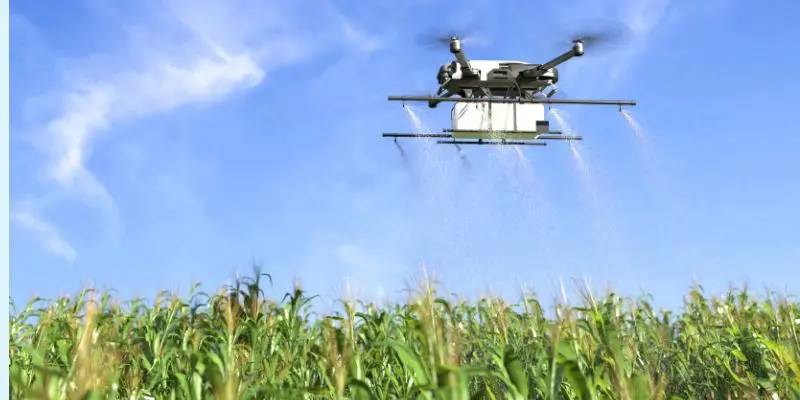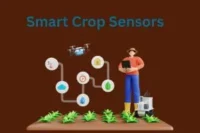Precision Agriculture with Drones in Midwest Corn Farming
Published: 24 Mar 2025
Midwest corn farmers faced challenges with monitoring crop health, managing pests, and optimizing resource use. To address these issues, a group of farmers adopted precision agriculture technology using drones equipped with high-resolution cameras and sensors.

So, guys, without wasting time, let’s jump into the article to learn Precision Agriculture with Drones in Midwest Corn Farming
Problem:
- Inefficient monitoring
- Excessive Resource Use
- Labor-intensive
- Inefficient Monitoring: Traditional methods were slow and often delayed identifying crop stress or pest infestations.
- Excessive Resource Use: Water, fertilizers, and pesticides were often applied uniformly, leading to overuse and waste.
- Labor-Intensive: Crop monitoring across large fields required a significant amount of time and labor.
Solution:
- crop health monitoring
- Variable Rate Technology (VRT)
- Real-Time Insight
Crop Health Monitoring: Drones flew over fields, capturing images and using infrared sensors to detect issues like pests, diseases, and nutrient deficiencies.
Variable Rate Technology (VRT): The data collected from drones allowed for the precise application of fertilizers and pesticides, targeting specific problem areas.
Real-Time Insights: Drones provided immediate feedback, allowing for quick decisions on irrigation and pest management.
Case Highlight
“Case light is a sleek, energy-efficient lighting solution designed to enhance visibility and aesthetics in any space.
Challenges:
- High Initial Investment: Drones and related technology require significant upfront costs for purchase, training, and setup.
- Technical Skills: Farmers needed to learn how to operate and interpret the data from drones, requiring time and resources for training.
- Data Management: The vast amounts of data generated by drones can be overwhelming to process and analyze without proper software and expertise.
- Regulatory Hurdles: In some regions, drone usage is regulated, requiring permits and adherence to specific operational guidelines.
Impact:
- Scalable for farms of various sizes, making it accessible for different agricultural operations.
- Promoted environmental sustainability by reducing chemical use and conserving water
- Boosted profitability through increased yields and resource savings
- Improved efficiency by reducing manual labor and time spent on field inspections
FAQS For Midwest Corn Farming
Here are some of the most frequently asked questions about Precision Agriculture with Drones in Midwest Corn Farming.
Drones provide real-time, high-resolution images of crops, allowing farmers to detect issues like pests, diseases, or nutrient deficiencies early. This enables targeted interventions and reduces crop loss. It increases accuracy and efficiency compared to traditional methods.
VRT allows farmers to apply fertilizers, water, and pesticides precisely where needed, reducing waste and optimizing resources.
Drones help monitor soil moisture levels and crop health, enabling farmers to adjust irrigation schedules and apply water only where necessary
Farmers must invest in the technology, which can be expensive, and learn how to operate drones and analyze the data
By increasing crop yields, reducing resource waste, and lowering costs, drone technology significantly boosts farm profitabilit
Conclusion
The use of drones in precision agriculture significantly transformed the way Midwest corn farmers manage their fields. This technology enhanced crop health monitoring, optimized resource usage, reduced costs, and contributed to higher yields. Despite the initial challenges of investment and technical learning, the long-term benefits have proven invaluable, offering a pathway to more sustainable and profitable farming practices. The case demonstrates how technology can be a driving force in the future of agriculture, addressing both economic and environmental challenges.

- Be Respectful
- Stay Relevant
- Stay Positive
- True Feedback
- Encourage Discussion
- Avoid Spamming
- No Fake News
- Don't Copy-Paste
- No Personal Attacks

- Be Respectful
- Stay Relevant
- Stay Positive
- True Feedback
- Encourage Discussion
- Avoid Spamming
- No Fake News
- Don't Copy-Paste
- No Personal Attacks





